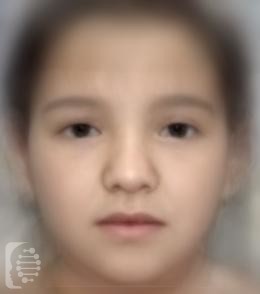What is Andersen Cardiodysrhythmic Periodic Paralysis?
Andersen Cardiodysrhythmic Periodic Paralysis, also known as Andersen-Tawil syndrome is a very rare genetic syndrome that has been diagnosed in around 200 individuals worldwide, up to 2018.
The main symptom of the syndrome is periodic paralysis accompanied by muscle weakness. These symptoms are progressive and may worsen over time.
This syndrome is also known as:
Andersen Syndrome Andersen-Tawil Syndrome; ATS Long Qt Syndrome 7; LQt7 Periodic paralysis – potassium sensitive Periodic Paralysis, Potassium-sensitive Cardiodysrhythmic Type
What gene change causes Andersen Cardiodysrhythmic Paralysis?
Around 60% of cases are believed to be caused by mutations in the KCNJ2 gene, and these are known as Type 1 cases.
The remaining cases have an unknown genetic cause and are referred to as Type 2.
Up to 22 genes have been identified in patients with Long QT syndrome.
It is inherited in an autosomal dominant pattern. Some cases are the result of a new mutation.
In the case of autosomal dominant inheritance, just one parent is the carrier of the gene mutation, and they have a 50% chance of passing it onto each of their children. Syndromes inherited in an autosomal dominant inheritance are caused by just one copy of the gene mutation.
In some cases, a genetic syndrome may be the result of a de-novo mutation and the first case in a family. In this case, this is a new gene mutation which occurs during the reproductive process.
What are the main symptoms of Andersen Cardiodysrhythmic Periodic Paralysis?
The main syndromes of the condition are periodic paralysis with muscle weakness which research suggests is usually triggered by exercise or extended periods of rest. This muscle weakness may increase over time.
Conditions involving the heart and in particular the rhythm of the heart are also serious symptoms of the syndrome. These include ventricular arrhythmia which affects the rhythm of the lower chambers of the heart, and long QT syndrome which produces irregular heartbeats which may cause pain, fainting and in more severe cases death.
Facial features associated with the syndrome include a small lower jaw and dental abnormalities. Low-set ears and widely-spaced eyes are another feature. As are the fusing of the 2nd and 3rd toes.
Other physical conditions might include short stature and scoliosis of the spine.
Possible clinical traits/features:
Prominent frontal sinuses, Syncope, Prolonged QT interval, Short metacarpal, Short metatarsal, Scoliosis, Slender long bone, Triangular face, Small hand, Thin upper lip vermilion, Microcephaly, Scapular winging, Short palm, Short mandibular rami, Low-set ears, Joint laxity, Specific learning disability, Preauricular pit, Clinodactyly of the 5th finger, Facial asymmetry, Clinodactyly of the 5th toe, Malar flattening, Delayed eruption of permanent teeth, Delayed skeletal maturation, Brachydactyly, Autosomal dominant inheritance, Palpitations, Persistence of primary teeth, Periodic hypokalemic paresis, Toe syndactyly, Oligodontia, Bidirectional ventricular ectopy, Blepharophimosis, Cleft palate, Antegonial notching of mandible, Bulbous nose, Short phalanx of finger, High palate, Broad forehead, Hypertelorism, Growth abnormality, Hypoplasia of the maxilla, Hypoplasia of dental enamel, Short foot.
How is this diagnosed?
To find out if someone has a diagnosis of Andersen Cardiodysrhythmic Periodic Paralysis, it is important to have a consultation and evaluation with a clinical genetic specialist. Specialists may also suggest specific genetic testing or other types of tests to help reach a diagnosis. FDNA’s AI technology can help speed up the diagnostic process by analyzing facial features and other health information.

